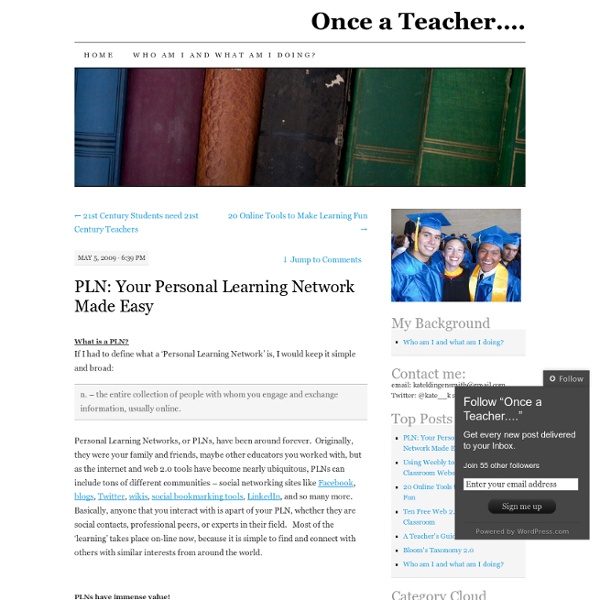James Mconville blog
Parents and students – here are some course updates and also events to look forward to in June. Firstly, I want to thank our teacher candidate, Ms. Rohani, for her excellent work and support of all students. We wish her well and know that she will make an excellent teacher! Math
40 Google Plus Tips for Newbies
Ok, so at this point, we are all newbies at Google Plus, right? At least if you got in recently via a Google Plus invite. At this point I’ve spent a decent amount of time with it and have concluded that Google has finally made a positive mark in social networking. It’s still early, but there is a lot of excitement around Google+ by those who have jumped on early, and for good reason. Google has launched a social network with several features designed to leapfrog its competition.
How to Create a Professional Learning Community
It takes careful planning to form a useful and functional PLC, but once the foundation is built, the benefits will soon be evident. This how-to article accompanies the feature "Teachers and Community Members Practice TLC with PLCs." Here are a few tips to consider when planning a professional learning community: Teach Participants How to Collaborate The success of PLCs hinges on collaboration, but don't assume it'll come naturally. Help the teams develop their own protocols and norms.
Creating a PLN
Skip to content Building your PLN Know it or not, you already have some sort of Personal Learning Network or PLN!
What Does Google+ Mean for Education
I became a Google+ user this week and I like it. From what I can tell it lets you do pretty much everything Facebook lets you do with some bonuses including being able to edit your status updates and comments and that you can select who the feed goes to via the circle(s) in which you share your updates. The circles I'm using are colleagues, co-workers, GTA, friends, family, volleyball.
How to Create a Robust and Meaningful Personal Learning Network [PLN]
This post describes how educators can develop a personal learning network that supports meaningful and relevant learning. The MOOC, Education Technology & Media, etmooc, is used here as a working example of how to develop a PLN. “My Personal Learning Network is the key to keeping me up-to-date with all the changes that are happening in education and how technology can best support and engage today’s students.” Brian Metcalfe: teacher, blogger at lifelonglearners.com A visual image of participants in an open, online course- etmooc, which shows the potential to find and create personal connections as part of one’s PLN. (image credit: Alec Couros)
Digital Citizenship
A district initiative to empower, educate and protect all users! This Digital Citizenship website was created as a response to a district need regarding responsible digital tool use in schools, and the expectations around the use of those tools in an academic setting and a school community in general. This included analysis of a wide variety of national and international documents (see reference list), examination of relevant BC and District curriculum and policy documents, and consultation with teachers, administrators, and students who collaborated to develop this framework. Click here to read the Rationale behind this framework. Click here to read Administrative Procedure 140.1 - Digital Responsibility for Employees and Administrative Procedure 140.2 - Digital Responsibility for Students.
20 Tips for Creating a Professional Learning Network - Getting Smart by Miriam Clifford
“20 Tips for Creating a Professional Learning Network” by Miriam Clifford first appeared on the InfomED blog. Networking is a prime form of 21st century learning. The world is much smaller thanks to technology.
Connected Educators, Leaders and Schools
Connected students need connected teachers. Connected teachers need backing from connected administrators. Connected administrators create and support connected schools!
Kick Start Your Blogging
Skip to content Personal Blogging This series guides you step by step through the process of setting up your own personal or professional educator blog. Refer our class and student blogging series if you want to set up a class blog.
21 Reasons to Stop Saying "21st Century Teacher"
This afternoon I saw a blog post titled 27 Ways To Be A 21st Century Teacher. 22 of the 27 items in that list could have been 50 years ago. And 24 of the 27 items are things that I did as a sixth grade student in 1990 (yes, I coded thanks to Logo Writer). Because of this I Tweeted the following in response to seeing the list; A couple of people asked me about this Tweet so please allow me to elaborate on why I'm tired of people saying "21st Century Teacher" as if it means something.



